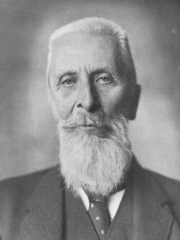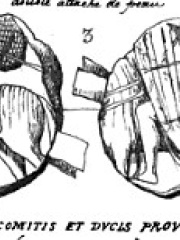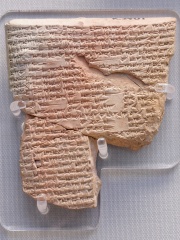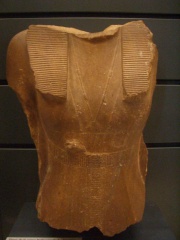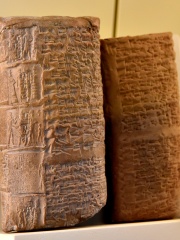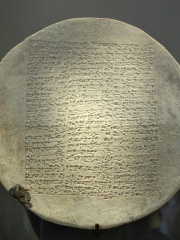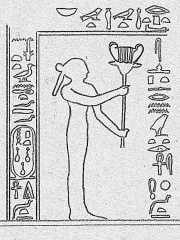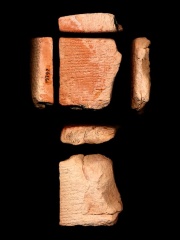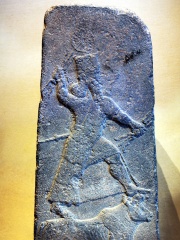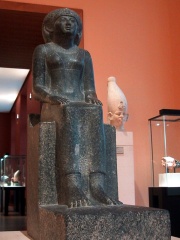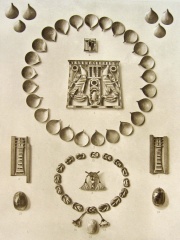POLITICIAN
Naram-Sin of Assyria
1900 BC - 1900 BC

 Naram-Sin of Assyria
Naram-Sin of Assyria
Naram-Sin, or Narām-Sîn or –Suen, inscribed in cuneiform on contemporary seal impressions as dna-ra-am-dEN.ZU, had been the "waklum" (ugula, Overseer) or "Išši’ak Aššur" (énsi da-šùr, Steward of Ashur) of the city-state Assur, listed as the 37th king of Assyria on the later Assyrian King Lists, where he is inscribed mna-ram-dEN.ZU, or a fragmentary list where he appears as -d30. He was named for the illustrious Naram-Sin of Akkad and took the divine determinative in his name (just like Naram-Sin's grandfather: Sargon I, who may have been named after Sargon of Akkad.) Naram-Sin should not be confused with the Naram-Sin who had ruled Eshnunna for around twelve years (the successor and son, as identified on an inscription, of the long-reigning Ebiq-Adad II.) It is probable that Naram-Sin of Assur was, however, contemporaneous with the earlier part of Ebiq-Adad II’s reign (whose last attestation was in the Mari Eponym Chronicle B line 25 some 56 years after Naram-Sin’s inauguration.): 46 Naram-Sin of Assyria was the son and successor of the short-reigning Puzur-Ashur II, filiation preserved in his seal impression on the envelopes of the waklum-letters to his expat Anatolian-based traders at the karum Kanesh and in the later Assyrian King Lists. The length of Naram-Sin's reign is uncertain, however; based on various excavated "limmu" (eponym) lists, the reigns of Naram-Sin and his son and successor Erishum II had a combined length of 64 years.: 29 The Assyrian King List records that Shamshi-Adad I, “went away to Babylonia in the time of Naram-Sin.” Shamshi-Adad I did not return until he had taken Ekallatum, after which he paused for three years and then overthrew Erishum II. The Mari Eponym Chronicle, which resumes the listing until the seizure of Ekallatum by Shamshi-Adad I, provides no clue as to when the succession of Erishum II had taken place. Read more on Wikipedia
Since 2007, the English Wikipedia page of Naram-Sin of Assyria has received more than 35,724 page views. His biography is available in 16 different languages on Wikipedia. Naram-Sin of Assyria is the 10,013th most popular politician.
Memorability Metrics
36k
Page Views (PV)
52.13
Historical Popularity Index (HPI)
16
Languages Editions (L)
5.92
Effective Languages (L*)
1.72
Coefficient of Variation (CV)
Page views of Naram-Sin of Assyrias by language
Among POLITICIANS
Among politicians, Naram-Sin of Assyria ranks 10,013 out of 15,577. Before him are Paullus Fabius Maximus, Epitácio Pessoa, Charles de la Cerda, Josip Manolić, Alexander von Benckendorff, and Henrique Rosa. After him are Charles Stewart Parnell, Massimo d'Azeglio, Albert Apponyi, Sancho, Count of Provence, Paul Levi, and António José de Almeida.
Most Popular Politicians in Wikipedia
Go to all Rankings
Paullus Fabius Maximus
40 BC - 14
HPI: 52.13
Rank: 10,007
Epitácio Pessoa
1865 - 1942
HPI: 52.13
Rank: 10,008
Charles de la Cerda
1327 - 1354
HPI: 52.13
Rank: 10,009
Josip Manolić
1920 - Present
HPI: 52.13
Rank: 10,010
Alexander von Benckendorff
1782 - 1844
HPI: 52.13
Rank: 10,011
Henrique Rosa
1946 - 2013
HPI: 52.13
Rank: 10,012
Naram-Sin of Assyria
1900 BC - 1900 BC
HPI: 52.13
Rank: 10,013
Charles Stewart Parnell
1846 - 1891
HPI: 52.13
Rank: 10,014
Massimo d'Azeglio
1798 - 1866
HPI: 52.13
Rank: 10,015
Albert Apponyi
1846 - 1933
HPI: 52.13
Rank: 10,016
Sancho, Count of Provence
1161 - 1223
HPI: 52.12
Rank: 10,017
Paul Levi
1883 - 1930
HPI: 52.12
Rank: 10,018
António José de Almeida
1866 - 1929
HPI: 52.12
Rank: 10,019

Contemporaries
Among people born in 1900 BC, Naram-Sin of Assyria ranks 10. Before him are Sargon I, Sobekneferu, Sin-Muballit, Apil-Sin, Sabium, and Ikunum. After him are Yahdun-Lim, Nur-Adad, Da Ding, Neferuptah, Puzur-Ashur II, and Damiq-ilishu. Among people deceased in 1900 BC, Naram-Sin of Assyria ranks 8. Before him are Erishum I, Kong Jia, Gao of Xia, Fa of Xia, Jin of Xia, and Ikunum. After him are Ur-Ninurta, Yahdun-Lim, Khenemetneferhedjet I, Abisare, Nur-Adad, and Sithathoriunet.
Others Born in 1900 BC
Go to all Rankings
Sargon I
1900 BC - 1900 BC
HPI: 62.14
Rank: 4
Sobekneferu
1900 BC - 1785 BC
HPI: 61.87
Rank: 5
Sin-Muballit
1900 BC - 1793 BC
HPI: 59.97
Rank: 6
Apil-Sin
1900 BC - 1813 BC
HPI: 57.28
Rank: 7
Sabium
1900 BC - 1831 BC
HPI: 56.80
Rank: 8
Ikunum
1900 BC - 1900 BC
HPI: 52.86
Rank: 9
Naram-Sin of Assyria
1900 BC - 1900 BC
HPI: 52.13
Rank: 10
Yahdun-Lim
1900 BC - 1900 BC
HPI: 50.91
Rank: 11
Nur-Adad
1900 BC - 1900 BC
HPI: 49.93
Rank: 12
Da Ding
1900 BC - 1741 BC
HPI: 49.79
Rank: 13
Neferuptah
1900 BC - Present
HPI: 49.43
Rank: 14
Puzur-Ashur II
1900 BC - 1801 BC
HPI: 49.00
Rank: 15
Damiq-ilishu
1900 BC - 1800 BC
HPI: 48.93
Rank: 16

Others Deceased in 1900 BC
Go to all Rankings
Erishum I
2000 BC - 1900 BC
HPI: 54.33
Rank: 2
Kong Jia
HPI: 53.74
Rank: 3
Gao of Xia
HPI: 53.33
Rank: 4
Fa of Xia
HPI: 52.98
Rank: 5
Jin of Xia
HPI: 52.89
Rank: 6
Ikunum
1900 BC - 1900 BC
HPI: 52.86
Rank: 7
Naram-Sin of Assyria
1900 BC - 1900 BC
HPI: 52.13
Rank: 8
Ur-Ninurta
2000 BC - 1900 BC
HPI: 52.05
Rank: 9
Yahdun-Lim
1900 BC - 1900 BC
HPI: 50.91
Rank: 10
Khenemetneferhedjet I
1950 BC - 1900 BC
HPI: 50.59
Rank: 11
Abisare
2000 BC - 1900 BC
HPI: 50.30
Rank: 12
Nur-Adad
1900 BC - 1900 BC
HPI: 49.93
Rank: 13
Sithathoriunet
1900 BC - 1900 BC
HPI: 45.80
Rank: 14









